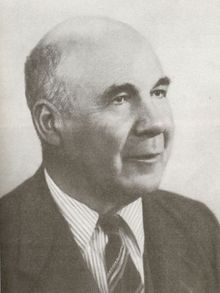 Heroes in The Struggle for Justice Heroes in The Struggle for Justice Important People in the Political Struggle for Aboriginal Rights
| ||||
1882 - 1950 | ||||
| ||||
|
Bill Ferguson by Jack Horner This article was published in Australian Dictionary of Biography, Volume 8, (MUP), 1981 William (Bill) Ferguson (1882-1950), trade unionist and Aboriginal politician, was born on 24 July 1882 at Waddai, Darlington Point, New South Wales, second of seven children of William Ferguson, shearer and boundary rider from Scotland, and his wife Emily, née Ford, formerly an Aboriginal housemaid in a prosperous station homestead—she died in childbirth in 1895. Ferguson's brief education (1895-96) came from nearby Warangesda mission school. Working in Riverina shearing sheds from 1896, he later became shed organizer for the Australian Workers' Union. On 18 February 1911 at Narrandera Presbyterian Church he married Margaret Mathieson Gowans, domestic servant of Carrathool, whom he had known as a station-manager's daughter at Darlington Point; they lived at Santigo near Narrandera, but travelled about for shearing work. The family settled in 1916 at Gulargambone, where Ferguson re-formed the local branch of the Australian Labor Party, being its secretary for two years. In 1920-24 he worked as mailman between Quambone and Gular, but returned to shearing. From 1928 he took labouring jobs, speaking in his union on reform of government relief work. He settled his wife and twelve children at Dubbo permanently in 1933. Ferguson had been aware since the early 1920s of the control imposed on the Aboriginal people by the New South Wales Aborigines Protection Board, which expected Aborigines of mixed descent to 'absorb' into society, and others to die out. Young men expelled from reserves by managers became bushworkers. Inspectors took girls away for training as domestic servants; 'pocket-money' was held in trust. When parliament amended the Aborigines Protection Act (1909) in 1936 to increase the powers of the board, Ferguson began organizing the 'dark people'. On 27 June 1937 he launched the Aborigines' Progressive Association at Dubbo, opening branches later on reserves. In November he was a witness before the Legislative Assembly's select committee on the administration of the Aborigines Protection Board; when the proceedings failed to initiate reform Ferguson, with two Aboriginal leaders, William Cooper and John Patten, organized a 'Day of Mourning' conference for Aboriginals, on Australia Day, 1938. That year Patten and Ferguson wrote the pamphlet, Aborigines Claim Citizen Rights!, and petitioned the prime minister Joseph Lyons, for a national Aboriginal policy. From 1938 Ferguson organized the A.P.A., conducting five annual conferences in country towns, formulating its policies, arranging publicity and welfare work. Among his assistants were Pearl Gibbs, Herbert Groves and William Onus, and a few white people. The Aborigines Welfare Board, replacing the old Protection Board, in 1940, was concerned with 'assimilating' Aboriginals to European ways, in nuclear families. Responding to A.P.A. demands for democratic rights, the government in 1943 had two Aboriginal representatives elected to the board. Against many candidates Ferguson won easily, but could not sit at first because officials vetoed Walter Page's nomination; but Aboriginal voters later confirmed Page in office. Ferguson was with the Welfare Board in 1944-49. Listening to complaints from reserve residents, he was astounded at the poor conditions. He demanded an inquiry into Menindee Aboriginal station, and though the board exonerated the manager, it recommended finding a better site. In July 1946 board members resolved to ask Ferguson to resign but next month reinstated him. Despite better housing, state school education in reserves and welfare work, segregation remained, and Ferguson denounced individual exemption from the Act as conditional citizenship. By February 1949, Ferguson was vice-president of the New South Wales branch of the Australian Aborigines' League, a national body with Onus as president. In June it sent a deputation to Canberra, asking for many administrative reforms drafted by Ferguson. Ben Chifley's minister for the interior, Herbert Johnson, was unresponsive; Ferguson, furious, left for Sydney intending to stand for parliament. Both political parties, he felt, ignored Aboriginal welfare; resigning from the Labor Party, he stood as Independent for Lawson, the Dubbo seat, in the December elections. The United Nations Declaration of Human Rights inspired his policy of civil rights for all people; but he won only 388 votes. He collapsed after his final speech, and died of hypertensive heart disease on 4 January 1950 in Dubbo Base Hospital. Ferguson habitually checked his facts with reserve residents before attacking official policies on land, housing and control, and he inspired young Aborigines to take up politics. The A.P.A. resolutions, mostly Ferguson's work, were ahead of their time. He stood tall, with a calm and reliable manner, and his strong Presbyterian faith supported his pride in Aboriginal people. Select Bibliography
J. Horner, Vote Ferguson for Aboriginal Freedom (Syd, 1974) | ||||
